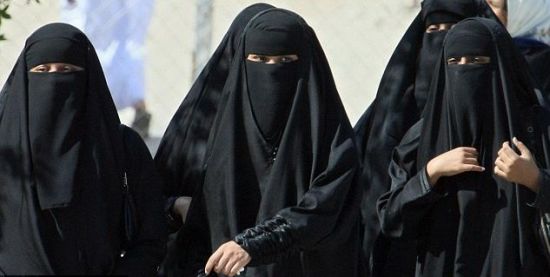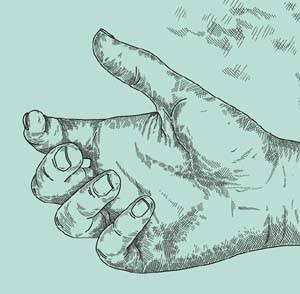
It’s time for feminists (male or female) to bring some clarity to the debate about the burqa. The discussion at the moment is dominated by two arguments that defend the burqa from criticism, both coming mainly from female Muslim academics who work and publish from comfortable posts in prominent universities in the United States or Europe, who do not live under the constraints of Sharia law.
The first of these arguments treats the rise of voluntary veiling in the West as a rejection of colonial influence. On this view, visible or externalised changes in Muslim women’s dress codes are interpreted as concessions to the coloniser or as attempts to assimilate to “superior” Western influences. Accordingly the veil functions primarily as a symbol of resistance to the colonising narrative of the quintessential “otherness” and inferiority of Islam. To dispute this argument is to reinforce a form of colonial domination.
The second argument is that the veil is a form of resistance to the West’s sexualisation and objectification of women. The assertion is that Western societies, no less than Islamic ones, pressure women into adopting forms of dress (and undress) that are intended to gratify the “male gaze” and turn women into sex objects. From this perspective, it is a bit rich for Western women (who “voluntarily” wear high heels, short skirts and make-up) to criticise Muslim women for choosing to wear coverings that liberate them from this sexist gaze. To dispute this argument is to suggest, implicitly or not, that Western freedom trumps Muslim puritanism.
In response to the first argument, it should be obvious that to oppose aspects of Islam that have institutionalised a gender hierarchy (or even apartheid) and silenced voices of equity for women is not to (mis)represent Islam per se as “inferior”. Western liberals and feminists have had their own battle with Christian sexism, and it is far from over. To think that criticising Islamic sexism is the same as saying that Islam is inferior implies that any critique of Islamic sexism excludes similar critiques of Christian or Jewish sexism, and is tantamount to a blanket rejection of Islam. It also implies that such a critique cannot be shared by Muslims themselves, or always represents a refusal to acknowledge Islam’s complexity. All but the most obtuse Westerners recognise that there are divergent beliefs within Islam about the practice of veiling and that many Muslims have argued for its abolition. Moreover, many Western critics of Islamic sexism think that Western patriarchal religious traditions (or even secular ones) are equally if not more oppressive and irrational than Islamic ones. Critiquing one does not imply condoning the other.
The desire to engage with Islam in critical argument and debate is not a form of disrespect but of esteem. Westerners who refuse to do so patronise Muslims and hypocritically oppose sexist practices and beliefs only where it is “politically correct” or expedient to do so. Not only are they fair-weather feminists, they also treat Islam with a special sensitivity that they do not grant to other religions, not because they really respect Islamic sexism, but because they are reluctant to be labelled “Islamophobic” or “racist” (since any criticism of Islamic sexism is likely to be misrepresented as such). Concern for, rather than indifference to, the plight of women living under Sharia law in sexist theocracies is anything but racism. In expressing human solidarity with these women, Westerners are not assuming their culture’s superiority over Islamic culture, but feminism’s superiority over sexism – a view that is exclusive to no particular culture and is certainly not absent from Islamic culture and religion. Western indifference to the fate of women from other cultural or religious backgrounds is far more racist than demonstrating interest in their struggle for human rights. Islam is a religion, not an ethnicity. There are plenty of non-white people, men and women, who disagree with Islamic misogyny and homophobia.
The second argument, concerning sexist objection in Western cultures, rests on two problematic assumptions. First, that Western feminist critics of the burqa do not oppose the sexualisation of the female body within their own culture and so have no right to talk about it in other cultures. This is flatly contradicted by the fact that Western feminists maintain a trenchant critique of sexual objectification “at home”. This defensive argument also rests on the assumption that you cannot be a “good” feminist if you regard the (shame-free) sexualisation of the female body as potentially empowering for women as autonomous sexual subjects.
This argument trades on the tu quoque ad hominem fallacy, or, in plain English, the “and that goes double for you” fallacy. The issue is not whether Western women are guilty of a similar form of capitulation to that of Muslim women, but whether the pressure on females to acquiesce to “feminine” dress codes (in either culture) amounts to sexist oppression. And even if Western women are not fully liberated, this has no bearing on their ability to oppose forms of sexism in other cultures as well as in their own. But the assertion that women who are sexualised (or not ashamed of their own sexual desires) are “oppressed” needs to be addressed and discussed too. If female sexual agency is somehow shameful while male sexual agency isn’t, then this needs to be argued for with good reasons. Male and female feminists should welcome a discussion of these double standards.
In Islamic cultures the predominant theological reasoning for veiling seems to be that the female body is such a powerful sexual object that nothing short of covering it can prevent men from molesting it. According to Islamic Hadith (or poor interpretations of it) the female body is so powerfully sexual that it is literally irresistible to the opposite sex. I refer those who argue that this is a misinterpretation of Islam to this statement by Australia’s influential senior Islamic cleric, Sheik Taj Aldin as-Hilali:
“If you take out uncovered meat and place it outside. . . without cover, and the cats come to eat it. . . whose fault is it, the cats’ or the uncovered meat’s? The uncovered meat is the problem. If she was in her room, in her home, in her hijab, no problem would have occurred.”
Some Westernised Muslim academics deny the primary theological significance of the burqa and instead claim that it is imbued with powerful symbolism by Western colonialism. Westerners, they argue, see the burqa as a symbol of the irrevocable “otherness” of Muslims. Accordingly the “hysterical” reactions to veiling are just a Western contrivance (a pretext for racist attitudes towards Muslims following 9/11). Yet the discourse vacillates between this claim and the contradictory claim that the veil has no special significance other than what the wearer intends it to mean, and so is no more than a form of personal expression – a symbol of Muslim women’s freedom to “be themselves”.
Sharia law is still enforced in approximately 35 nations, where some form of veiling is compulsory. An estimated 83 Sharia courts operate in England today. Many Muslim families living in Western Europe use legal forms of coercion to make girls and women conform to veiling. The murder of Shafilea Ahmed, by her own parents, is a case study in how Europeans respond to these situations of family violence with an embarrassed silence, rather than the kind of outrage that would be seen as appropriate were its victims not exclusively female. The Iranian and Kurdish Women’s Rights Organisation (Ikwro) found last year that 39 out of 52 police forces across the UK had recorded at least 2,823 “honour” attacks over 2010. Some forces showed a jump of nearly 50 per cent in such cases from 2009. This is the backdrop against which Muslims in Europe claim that wearing the burqa is a “choice”.
The claim that covering yourself up in public is an empowering choice insults the intelligence and dignity of women everywhere, just as the theological claim that the burqa is a necessary defence against predatory male sexuality insults Muslim men insofar as it treats them as fundamentally incapable of responsibility for their sexual behaviour.
The reason Western feminists (male or female) object to seeing women in burqas is not that we can’t tolerate diversity, but that the burqa is a symbol of patriarchal Islam’s intolerance of dissent and desire to contain and repress female sexuality.

